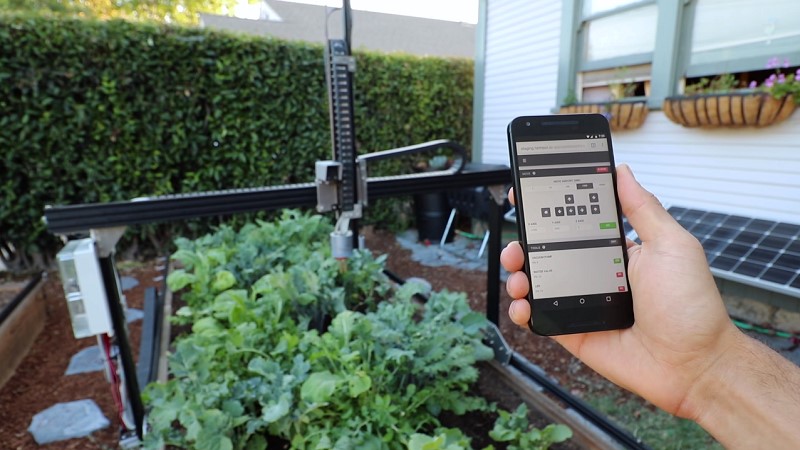i3 technology can be applied to many different industries where data and collaboration are critical success factors. The i3 system is unique in that it was purpose-built to support federated operating environments. Federated organizations can be described as environments where many independent groups must work together despite their organizational autonomy. As an example, city governments are usually composed of numerous independent operational departments that need to collaborate to support their citizens. Another example might be a large multinational corporation that has been organized as a series of autonomous units organized around product lines or counties. Similarly, an ecosystem of independent companies that must work with other ecosystem members to provide solutions to a common customer is also a federated environment.
All these organizations depend heavily on exchanged information to drive business and produce results for the constituencies. i3 helps these organizations make better use of the information they have and in doing so i3 improves the organization’s operational effectiveness. And, by managing the information flows between organizational units, there is greater data reuse and improved information efficiencies which leads to a better financial return on their data investment (ROI).
Research shows that the highest-performing companies understand the importance of information as a key competitive differentiator. These companies are shifting from looking at information as a consumable that supports an application to one where information is actively managed as a strategic asset. However, many companies are held back from these initiatives because there has been a lack of tools to support the management and control of information once it is shared with outside parties — that is until now. i3 stands ready to support these organizations by providing the tools they need to manage these assets.
At its core, the i3 Software provides a framework that allows communities to form across organizational boundaries based on their needs to use information in support of customers and pursuit of new opportunities. The information exchanged between these operational units acts as an enabler that allows collaboration and operational coordination across organizational divides. Further, because these ecosystems serve an increasingly dynamic market, i3 provides the operational independence needed to allow information exchanges to evolve as policies, procedures, and other needs change over time. Such inter-organizational information curation and governance systems are needed to dynamically manage information flows that can change as fast as the market evolves.
Healthcare

Healthcare is a community-wide concern but most healthcare-driven technology initiatives have been targeted to support doctors or hospitals. Some of these initiatives are truly miraculous but patients have to go to the hospital or the doctor’s office before they can benefit from these solutions. And, once in that controlled environment, any derived information is locked into these managed settings where access to the information can be restricted to protect the patient’s privacy. The emergence of i3 represents a new direction that creates fully connected wellness communities. i3 allows many established healthcare providers to come together and share information in a managed and controlled environment. i3 also allows the incorporation of patients and other healthcare entities to participate in sanctioned information exchanges that support medical research and the monitoring of civic healthcare outcomes. As an example, wellness data from consumer products could be made accessible to patient-approved doctors. Alternatively, pharmaceutical companies could use the facilities of i3 to serve to maintain access to research supervised by a virtualized Institutional Review Board (IRB). The dynamic nature of the i3 data fabric gives the healthcare professional the freedom to activate information flows in support of an individual, an institution, or an entire community as needed.
Retail/Hospitality

Shopping, dining, and entertainment are no longer about buying a needed item or service – it as evolved to and is about the experience. The Internet has expanded the buying options available to consumers and with so many options to choose from, purchasing activity has become highly dependent on the channel that provides the best consumer experience. While stores and restaurants have significant control over their immediate surroundings, the consumer experience is impacted long before the customer crosses the merchant’s threshold. Creating customer experiences that generate excitement and loyalty among consumers requires merchants to understand the complete customer journey, and this drives a need for retail entities to have access to external information that can be used to shape the customer before and after the consumer is at the merchant’s premises. This requires the forward-looking retailer to have access to information that can be called upon to satisfy short or long-term data requirements. i3 Systems can work with shopping centers, business improvement districts, and merchant associations to allow retail and hospitality enterprises to share information within the confines of a collaborative environment in order to create unparalleled consumer experiences. The net result is a delighted consumer and better business results for the business owners.
Smart Government

Government agencies are often structured around multiple functional departments, each with a distinct and individualized mandate to serve the citizens. While this structure allows efficient departmental operations, it often impedes the flow of information between departments, cities, and counties. Without such macro-level information, insights are often overlooked and opportunities to improve efficiencies or quality of life are difficult, even impossible, to find. Technology from i3 Systems creates a data fabric that allows approved information to be shared, in a managed way, between operational entities. This same data fabric provides the ability for cities to interact with the citizens and businesses they support through a controlled information exchange that allows the cities to better serve the citizens they support. Recent events serve to demonstrate the importance of information in combatting issues that transcend city and county borders, Pandemics, earthquakes, fires, and floods are examples of potential crisis-level issues that require the cooperation of many government agencies. Coordination of civic response has to be based on the exchange of information and i3 Systems provides data fabrics that can rise to such occasions. As an example, the i3 information infrastructure can facilitate emergency responses and provide the basis for advanced services citizens expect from their smart cities.
Smart Manufacturing

The industrial age gave rise to factories and assembly lines which enabled machines to take on much of the manufacturing burden and in doing so, these technologies unleashed a new age of economic growth by making factory workers more productive. Experts have forecast the manufacturing world will begin to experience a fourth industrial revolution and in doing so, the world will undergo another transformation process that creates even greater opportunities. Under the flag of the fourth industrial revolution, manufacturing equipment becomes both smart and automated; these systems will be more capable and they will be able to instantly pivot in order to respond to rapidly changing production needs. This evolution of the manufacturing space will not be based on a series of smart manufacturing devices but instead, entire manufacturing lines will be integrated so the factory line operates synchronously with the company’s business information systems. The flow of raw materials into the factory and the delivery of finished goods will be coordinated to maximize efficiency and dynamically linked to the drivers of demand. Supply chain partners will use the information to coordinate the transportation of goods to distribution centers and subcontract ecosystem partners. Such a managed environment will allow business processes will allow manufacturers to evolve from a necessary focus on high-volume manufacturing to on-demand manufacturing that also provides the economic benefits that traditionally could only be achieved through volume and repetition,
Smart Agriculture

The agricultural industry has been on a relentless march toward embracing big agricultural farms. Larger farms acquire smaller farms in order to achieve the scale needed to afford products and services that require volume production. Conversations about big agriculture often focus on how the latest technologies have been applied to harvesters, tractors, or other farming tools. The importance of information is often neglected in such conversations even though it is understood that access to information and data analytics are becoming as important to the modern farmer as a shovel. Big agriculture, besides benefiting from the latest farming technology also benefits from its access to significant information resources that are closely protected much like a patent or fertilizer formulation. Data fabrics, such as that provided by i3, provide an ability for small farmers to work together through information collaboratives, to develop their own information resources that allow them to compete against big agriculture. Some have even speculated that such community-managed information systems are analogous to community grain silos that allowed communities of small and medium farmers to prosper in the face of growing competition from larger mega-farming systems.
Smart Oil and Gas

Oil and gas companies use natural resources and through a series of complex processes, convert those raw materials into various forms of fuel that provide the energy we need to exist in today’s world. The processing plants that are utilized by these companies represent a large and extensive infrastructure investment that is physically at a fixed location. Maximizing the efficiencies of these investments requires these assets to be operated at peak efficiency even though the source of the natural materials they need may not be conveniently located. Oil and gas companies have exploration groups spread throughout the world constantly looking for sources of natural resources. Once these resources are found, a complex network of ecosystem partners is utilized to extract and transport the natural resources to centralized processing plants. After processing, an equally complex network of distribution partners must be utilized to move the product to market. Because of i3’s focus on the creation of an active data fabric that allows information to flow between partners involved in the process, efficiencies can be maximized and the distribution network can be changed as partners adjust and adapt to account for current market conditions.
As these companies begin to look beyond oil and gas to find new and environmentally friendly forms of energy, their production and distribution processes will change but their dependence on information for research, exploration, production, and distribution will remain constant. Under certain scenarios, it is even possible that these transformational changes will result in creating an environment where the information assets of these companies will become more valuable than the raw materials that drove the historic evolution of these companies.